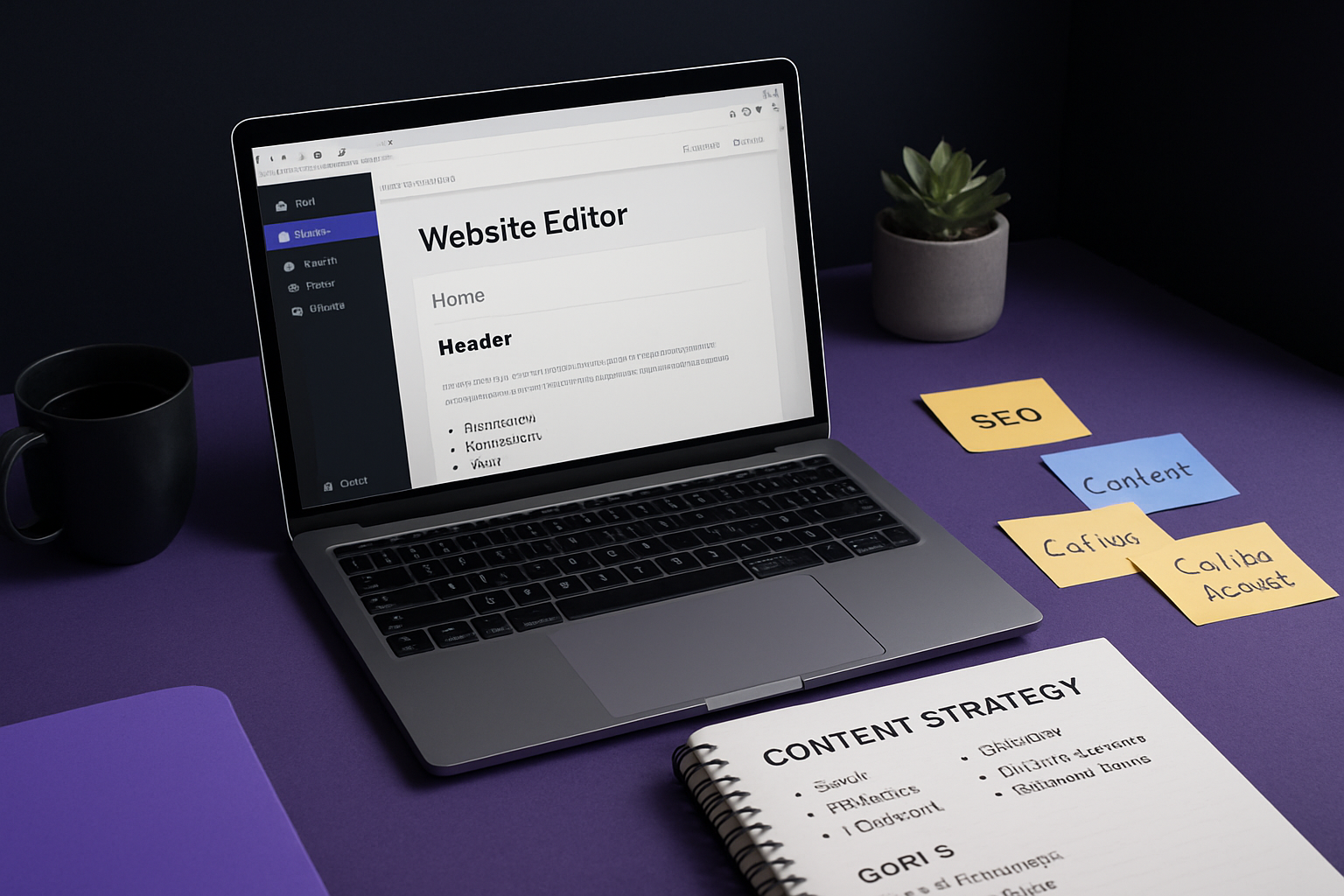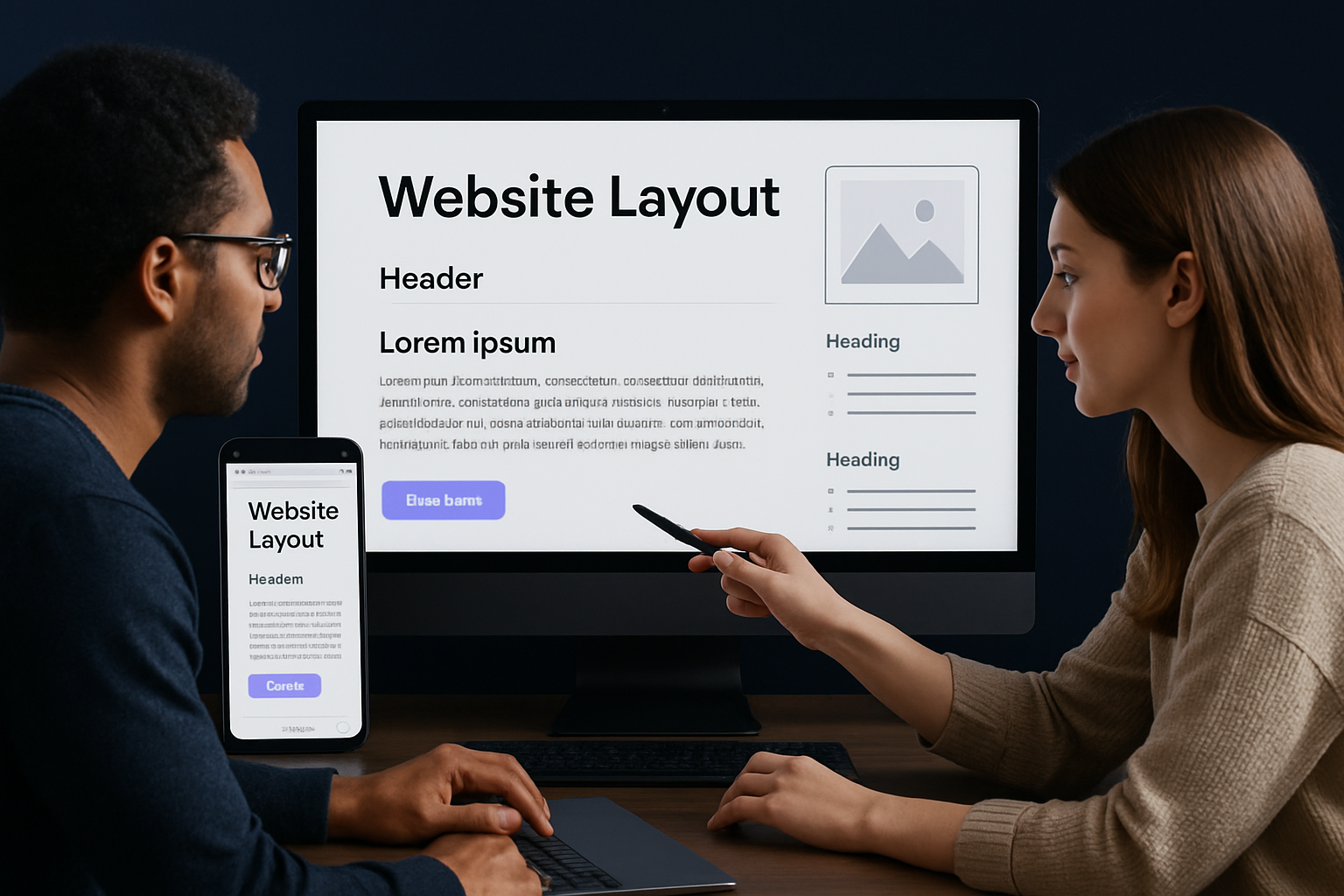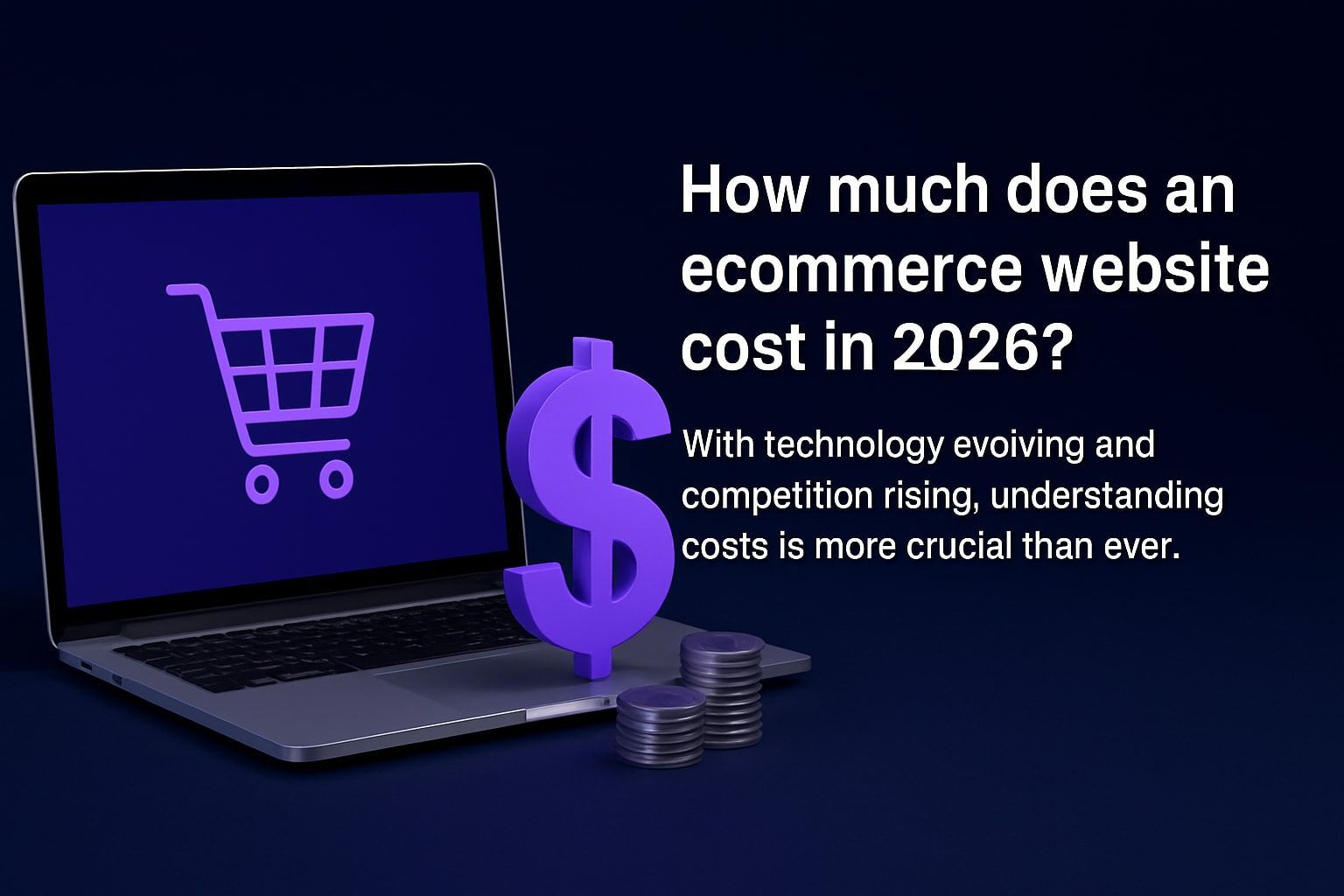Website Text Guide: Best Practices for 2025
In 2025, the quality of your website text can make or break your online presence. As digital competition intensifies and AI-powered experiences set new expectations, every word on your site matters. This guide delivers actionable best practices for website text, helping you engage users, boost conversions, and master SEO. We’ll explore evolving user behavior, content strategies, proven writing techniques, design integration, accessibility, and upcoming trends. Ready to outperform your competitors? Dive in and start transforming your website text into a powerful tool for growth and user satisfaction.
Understanding the Changing Landscape of Website Text in 2025
The digital world is evolving at lightning speed, and so is the way we approach website text. In 2025, new technologies and shifting user preferences are rewriting the rules for how content is created, structured, and consumed. Businesses need to keep pace or risk losing relevance in a crowded online marketplace.

Evolving User Behavior and Content Consumption Patterns
User behavior on the web has changed dramatically. More than 60% of all web traffic now comes from mobile devices, fundamentally altering how people read and interact with website text. Instead of reading every word, users scan pages, searching for the information they need in seconds. Attention spans are shorter, and expectations for instant access are higher than ever.
AI-powered search and voice assistants are also influencing how website text is written. Content must be structured for quick answers, with clear headings and relevant keywords. For example, micro-content like FAQs or product highlights often outperforms long blocks of text on mobile. Meanwhile, long-form articles are still valuable but must be broken up with subheadings, lists, and visuals.
Fast loading times are non-negotiable. Users expect concise, relevant website text that gets to the point without fluff. If they can't find what they need quickly, they're likely to leave. For more insights on how these trends are shaping user expectations, see Google User Behavior Statistics 2025.
In short, today's digital audience demands website text that is both scannable and informative.
The Role of Website Text in Brand Trust and Conversion
Clear, authentic website text builds credibility. When visitors land on a site, they judge its trustworthiness within seconds. Well-written, transparent messaging assures users they're in the right place and encourages them to stay.
Effective website text also drives conversions. Strong calls-to-action, benefit-focused headlines, and clear explanations can turn a casual visitor into a paying customer. Brands that have optimized their website text often see measurable improvements in conversion rates. For instance, a leading SaaS company increased sign-ups by 30% after simplifying its homepage copy and clarifying its value proposition.
On the flip side, poor website text—such as confusing language, jargon, or errors—leads to high bounce rates and low engagement. If users can't understand the offer or feel disconnected, they're unlikely to convert or return.
Ultimately, website text is more than words on a screen; it's a key driver of trust, loyalty, and business growth.
Key Trends Impacting Website Text in 2025
Several major trends are shaping website text this year:
- AI-generated content: Tools now help create and refine website text, saving time but raising questions about authenticity.
- Personalization: Dynamic content adapts to user data, offering tailored experiences that boost engagement.
- Multimedia integration: Combining text with video, audio, and interactive elements keeps users interested and improves understanding.
- Accessibility and inclusivity: Clear, readable website text ensures everyone, including people with disabilities, can engage with content.
Here's a quick comparison of trending approaches:
| Trend | Benefit | Challenge |
|---|---|---|
| AI Content | Fast, scalable creation | Risk of generic messaging |
| Personalization | Higher relevance | Data privacy concerns |
| Multimedia | Richer experiences | Requires careful balance |
| Accessibility | Wider audience reach | Ongoing compliance efforts |
Staying ahead means embracing these shifts and continually refining your website text strategy.
Crafting a Winning Website Content Strategy
Building a strong website text strategy in 2025 is crucial for brands that want to stand out. A well-crafted approach not only aligns with business goals but also creates meaningful connections with users. Let’s break down the essential steps to create a content strategy that drives results.

Setting Clear Objectives and Understanding Your Audience
The first step to effective website text is defining clear objectives for each page. Ask: Should this page inform, convert, engage, or support? Tie every goal to specific business outcomes.
Develop detailed audience personas to guide your messaging. Consider demographics, interests, pain points, and user intent. By understanding your audience, you ensure your website text speaks directly to their needs and expectations.
Competitor research is vital. Brands that prioritize user-centric website text often see increased engagement and loyalty. Use insights from analytics and reviews to refine your understanding of what resonates.
Mapping the User Journey and Content Needs
A winning website text strategy maps out the entire user journey. Identify every touchpoint — from the homepage to product pages, blogs, and support centers.
For each stage, ask what users expect and what information they need. A simple table can help organize your content planning:
| Page Type | User Goal | Key Message |
|---|---|---|
| Homepage | Awareness | Brand value, navigation |
| Landing Page | Consideration | Benefits, features, proof |
| Product Page | Decision | Details, CTAs, trust cues |
| Support | Retention | Help, FAQs, contact info |
Mapping helps ensure your website text is always relevant and actionable, guiding users seamlessly from awareness to conversion.
Developing a Consistent Brand Voice and Tone
Your website text should always reflect a clear and consistent brand voice. A documented style guide is essential. Define your tone: Is it friendly, authoritative, playful, or formal? Adapt tone by context — legal pages may require a formal approach, while blogs benefit from a conversational style.
Leading brands excel by maintaining this consistency. For inspiration, study how companies like Mailchimp or Shopify use tone to build trust and recognition across every touchpoint. Consistency makes your website text memorable and aligned with your brand’s personality.
Content Planning and Editorial Calendars
Effective website text doesn’t happen by accident. Start with brainstorming sessions to generate ideas that align with your goals and audience needs. Organize these ideas into an editorial calendar that schedules creation, review, and updates.
Regularly review analytics to identify what’s working and where improvements are needed. Plan for routine content audits and refreshes. This keeps your website text relevant and ensures outdated information doesn’t erode user trust.
A well-managed editorial calendar streamlines workflow, prevents gaps, and ensures all stakeholders are on the same page.
Collaboration and Workflow Optimization
Crafting exceptional website text requires collaboration between writers, designers, and SEO specialists. Use content management systems, project boards, and AI-powered website content tools to streamline workflow and boost productivity.
For example, AI-powered website content tools can help teams generate, edit, and optimize website text efficiently. These tools support real-time collaboration, automate routine tasks, and maintain quality standards.
Establish clear processes for feedback, version control, and approvals. Early and ongoing collaboration leads to more cohesive, effective website text that’s ready for the demands of 2025.
Writing Effective Website Text: Techniques and Best Practices
Crafting effective website text is both an art and a science. Success in 2025 demands more than just clever words—it requires a strategic approach that prioritizes clarity, engagement, and results. Let's break down the key techniques and best practices to elevate your website text.

Structuring for Readability and Engagement
Modern users scan before they read. To make your website text effective, structure content with short paragraphs, clear subheadings, and bullet or numbered lists. The “inverted pyramid” style places the most important information first, letting readers grasp key ideas immediately.
Use formatting like bold or italics to highlight crucial details. For example, compare these two versions:
Before:
Our platform offers a wide range of tools that help businesses grow and increase revenue by streamlining processes and improving customer engagement.
After:
Grow your business faster. Our platform streamlines processes and boosts customer engagement—all in one place.
Notice how the second version of the website text is easier to scan and more impactful.
- Break content into small chunks.
- Use descriptive headings.
- Highlight key points with formatting.
This structure keeps website text engaging and easy to navigate.
Clarity, Brevity, and Simplicity
Clear website text wins trust. Always prefer plain language, active voice, and concise sentences. Short, direct statements help users understand your message quickly.
Break down complex ideas into simple explanations. Tools like Hemingway Editor or Flesch-Kincaid scores can assess your readability. For more guidance, check out these Web Writing Best Practices.
For instance, instead of "Utilize our comprehensive solutions to maximize operational efficiency," say "Use our tools to work smarter." Simple website text ensures your audience never gets lost.
Creating Compelling Calls-to-Action (CTAs)
A high-converting CTA is clear, specific, and action-oriented. The best website text for CTAs uses strong verbs and tells users exactly what to do next.
Effective CTAs often:
- Address user needs (“Start your free trial”)
- Offer clear benefits (“Download the guide”)
- Create urgency (“Claim your offer today”)
A/B testing shows that optimized CTAs can increase conversions by up to 200%. Place CTAs where users are ready to act and ensure the surrounding website text supports the action.
| CTA Example | Purpose |
|---|---|
| Get Started Free | Drive sign-ups |
| Download the Guide | Capture leads |
| Contact Us Today | Encourage inquiries |
Personalization and Dynamic Text
Personalized website text resonates more with users. Use data like location, browsing history, or preferences to tailor messages.
For example, greet returning visitors by name or show product recommendations based on their interests. Dynamic website text makes the experience feel unique and relevant.
- Personalized greetings (“Welcome back, Sarah!”)
- Location-based offers (“Free shipping to New York!”)
- Behavioral recommendations (“You might like these products”)
These techniques keep users engaged and increase the likelihood of conversions.
Storytelling and Emotional Connection
Great website text tells a story. Stories humanize your brand and make your message memorable.
Use customer testimonials, case studies, or your brand’s origin story to build trust and foster an emotional bond. For example, a brief customer quote can make your website text more relatable and persuasive.
“After switching to this platform, our team doubled productivity and cut costs by 30%.”
Storytelling in website text drives engagement and creates lasting impressions.
Avoiding Common Mistakes
Certain pitfalls can undermine even the best website text. Avoid keyword stuffing, technical jargon, and passive voice.
Watch out for:
- Duplicate or thin content (hurts SEO and trust)
- Overly complex sentences (reduce clarity)
- Generic, non-specific language (“We offer solutions” vs. “Our CRM helps retailers track sales in real time”)
Regularly review and update your website text to stay relevant and trustworthy.
Integrating SEO Without Sacrificing User Experience
SEO should enhance—not compromise—your website text. Use main keywords naturally, aiming for a density around 1-2%. Integrate synonyms and related terms for a richer, more valuable experience.
Place keywords in headings, meta descriptions, and alt text. Always write website text for human readers first, focusing on intent and usefulness.
- Research keywords based on user intent.
- Use semantic variations for depth.
- Prioritize readability and flow over rigid keyword placement.
This balanced approach ensures your website text performs well in search while keeping users happy.
Integrating Text with Design and User Experience
Effective website text and design are inseparable. Their synergy shapes how users absorb information and interact with your site. In 2025, blending compelling copy with thoughtful design is the foundation for trust, clarity, and engagement.

Typography and Readability
Typography sets the tone for your website text. Choose 1–2 typefaces, like Proxima Nova or Work Sans, to maintain consistency and professionalism. Use a mix of weights and styles for emphasis, but avoid clutter.
Aim for line lengths between 75–85 characters for optimal readability. Test your fonts on different devices to ensure legibility. Good typography makes website text inviting and effortless to read, which keeps users engaged and moving through your content.
Font Size, Color, and Contrast
Font size directly impacts how users perceive website text. For body copy, 18–20px is the sweet spot for clarity, especially on mobile devices.
Avoid harsh pure black or white; instead, opt for softer contrasts like
hsla(0,0%,0%,0.84)
for text and subtle background shades. This reduces eye strain and promotes a modern, welcoming feel. Major sites like Medium and Vox use these principles to create inviting reading experiences.
Responsive Design and Mobile Optimization
Responsive design ensures your website text looks great on any device. Scale text and adjust spacing using CSS breakpoints, so content remains readable whether viewed on a phone or desktop.
Manual tweaks in your website builder help align headings and body text, especially for blogs. Left-aligned headings improve clarity and guide users through your content on small screens.
Visual Hierarchy and Scannability
A strong visual hierarchy guides users through website text. Use clear headings, subheadings, and lists to break up information. Visual cues like pull quotes and highlighted panels draw attention to key points.
A well-structured landing page uses these elements to boost engagement and retention. For inspiration, check out Website templates for content design featuring layouts that balance text and visuals seamlessly.
Integrating Text with Multimedia Elements
Combine website text with images, videos, and infographics to create richer experiences. Multimedia should enhance—not overshadow—your message.
Ensure text remains accessible: use alt text for images and captions for videos. This approach helps all users, including those relying on assistive technology, to fully engage with your content.
Collaboration Between Writers and Designers
Collaboration is key for outstanding website text and design. Involve copywriters early in the design process to align messaging with layout.
Use shared style guides, design previews, and regular feedback loops to keep everyone on the same page. This teamwork results in cohesive, user-focused websites that drive better outcomes.
Optimizing Website Text for SEO and Accessibility
Optimizing website text is essential for both visibility and user inclusivity in 2025. To outperform competitors, your content must be discoverable, meaningful, and accessible on every device and for every user.
SEO Fundamentals for Website Text
Effective SEO starts with understanding what your audience is searching for and how to integrate those insights into your website text. Begin by researching target keywords that reflect user intent and competition. Place these keywords naturally in headings, opening paragraphs, meta tags, and URLs.
Avoid keyword stuffing—search engines prioritize content that reads naturally. Instead, add synonyms and related terms to build semantic depth. For actionable guidance, see SEO optimization best practices.
A quick checklist for SEO-friendly website text:
- Main keywords in H1 and H2 tags
- Secondary keywords in subheadings and body
- Meta descriptions with primary keyword
- Clean, descriptive URLs
Semantic HTML and Structured Data
Semantic HTML gives website text structure and meaning, helping both users and search engines. Use tags like
<h1>
,
<h2>
,
<p>
,
<ul>
,
<ol>
,
<strong>
, and
<em>
to organize content logically.
Implementing schema markup boosts your site’s appearance in search results. For example, adding FAQ schema can win you rich snippets in Google. Here’s a simple schema example:
{
"@context": "https://schema.org",
"@type": "FAQPage",
"mainEntity": [
{
"@type": "Question",
"name": "What is website text?",
"acceptedAnswer": {
"@type": "Answer",
"text": "Website text refers to all written content on a website, including headings, paragraphs, and calls to action."
}
}
]
}
This approach makes your website text more discoverable and usable.
Writing Accessible Website Text
Accessibility ensures your website text is usable for everyone, including people with disabilities. Write in clear, simple language and provide descriptive link text—avoid generic phrases like “click here.”
Always include alt text for images and captions for videos. Following Website Accessibility in 2025 guidelines helps you meet WCAG 2.2 standards.
Tips for accessible website text:
- Use headings to break up content
- Keep sentences concise
- Make interactive elements keyboard-friendly
- Test with screen readers
Accessible website text builds trust and expands your audience.
Mobile and Voice Search Optimization
With mobile and voice search dominating, website text must be concise, conversational, and easy to scan. Structure your content to answer questions directly—this increases your chances of being featured in voice results and snippets.
Create FAQ sections using clear questions and answers. Keep paragraphs short and use bullet points. Here’s an example of voice-friendly website text:
- “What are your business hours?”
- “We’re open Monday to Friday, 9 AM to 6 PM.”
Optimizing website text for mobile and voice search ensures users get information fast, no matter how they access your site.
Performance and Technical SEO
Fast-loading website text keeps users engaged and helps your rankings. Minimize unnecessary words and code to reduce page size. Use lazy loading for images and avoid excessive inline styles.
Run regular audits to check for broken links, outdated content, and slow-loading pages. Tools like Google Lighthouse or Screaming Frog can help you spot issues quickly.
A summary table for technical SEO checks:
| Task | Frequency | Tool |
|---|---|---|
| Audit broken links | Monthly | Screaming Frog |
| Check loading speed | Weekly | Google Lighthouse |
| Update outdated text | Quarterly | CMS Analytics |
Healthy performance supports both SEO and user experience, making your website text work harder for you.
Future-Proofing Your Website Text: Trends and Innovations
Staying ahead in digital communications means anticipating how website text will evolve. As technology, design, and user expectations shift, future-proofing website text is essential for continued relevance and impact.
AI and Automation in Content Creation
AI-powered tools are rapidly changing how website text is created and optimized. Brands now leverage AI for everything from product descriptions to FAQs, saving time and boosting consistency. However, human oversight remains vital to preserve authenticity and ensure the website text truly reflects the brand’s voice. Successful companies balance automation with editorial review, using AI to streamline workflows but never fully replacing the human touch.
Personalization and Dynamic Content Evolution
Personalization is becoming the norm in website text, with dynamic content adapting in real time to user data and behavior. Whether it’s greeting returning visitors by name or suggesting products based on browsing history, tailored website text can significantly boost engagement. As this trend grows, businesses must also prioritize user privacy, offering transparent options for consent and data usage to maintain trust.
Multimodal and Interactive Text Experiences
Website text is no longer limited to static paragraphs. Interactive elements like quizzes, calculators, and chatbots are now common, inviting users to engage more deeply. Additionally, providing video and audio transcripts not only enhances accessibility but also improves search rankings. For more on integrating text with cutting-edge design, see Web Design Best Practices for 2025, which explores strategies for seamless user experiences.
Globalization and Multilingual Content
As audiences become more global, supporting multiple languages in website text is increasingly important. Effective translation and localization go beyond word-for-word conversion—they adapt messaging for cultural nuances and local preferences. Brands investing in multilingual website text can reach wider audiences and drive international growth, provided quality and context are never sacrificed.
Continuous Content Optimization
The future of website text is all about agility. Regular content audits, analytics, and user feedback help identify what resonates and what needs improvement. By staying current with SEO updates, accessibility standards, and emerging technologies, businesses can test, learn, and refine their website text to outperform competitors year after year.
If you’re ready to put these website text strategies into action and give your online presence a true edge for 2025, why not take the next step? With Avantiy, you don’t need coding skills or weeks of setup—just your ideas and a few clicks. Their AI-powered platform, customizable templates, and built-in SEO tools make it easy to create a site that not only looks great, but also connects and converts. Let’s turn those best practices into results—Get Started for Free and see what you can build today!
Start building your new website today
No credit of debit card required start building today




